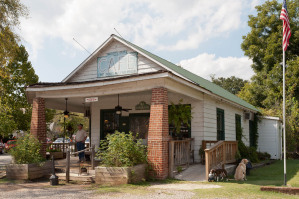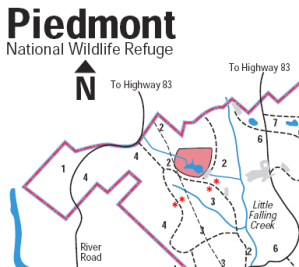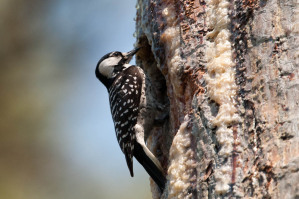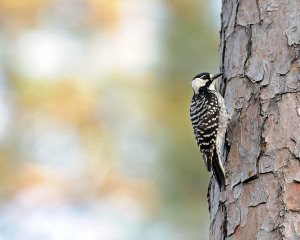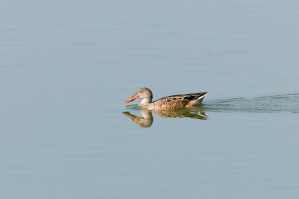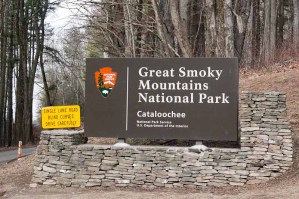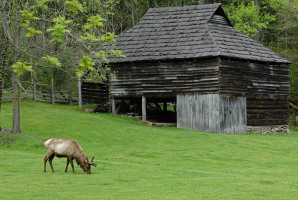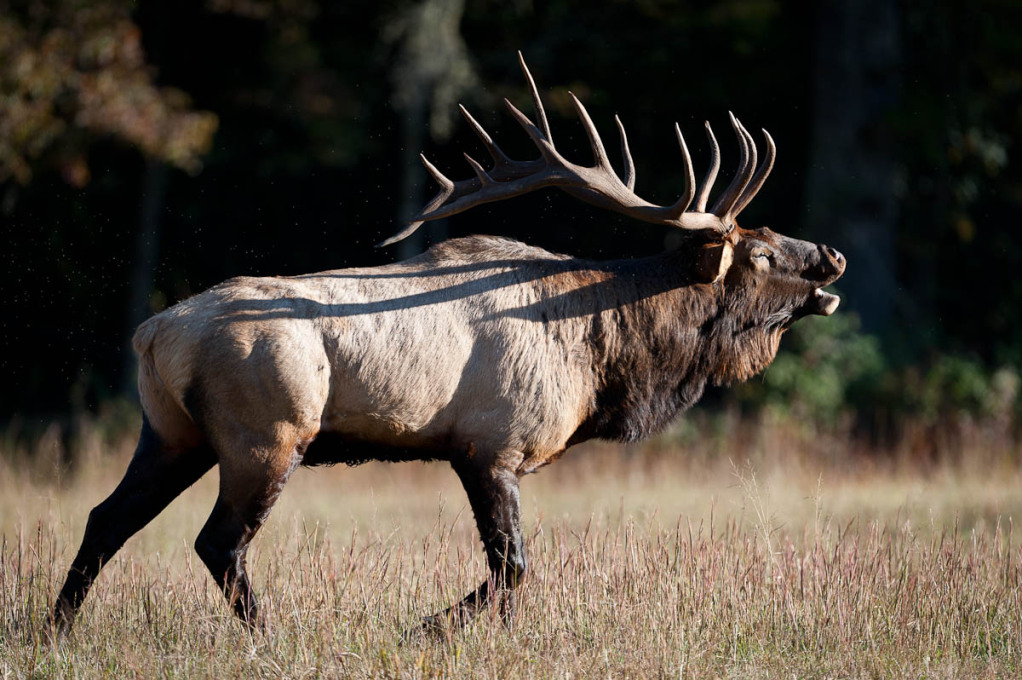“Honey, I’ve got a great idea. Let’s take a ride on the road to nowhere!” Those words had hardly cleared my lips when my wife gives me “the look”. Sort of halfway between “are you serious?” and “on no, not another hair-brained idea”.
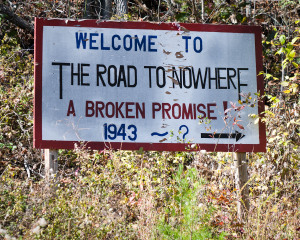 Well, there really is a “Road to Nowhere”. It’s located near Bryson City, NC and was born out of an agreement in 1943 between the National Park Service and the people of Swain County North Carolina. The US was in the middle of World War II. We needed aluminum to build aircraft. The Alcoa Aluminum production facility in Alcoa, TN needed electricity so the Tennessee Valley Authority (TVA) was given funding by congress in 1941 to build Fontana Dam.
Well, there really is a “Road to Nowhere”. It’s located near Bryson City, NC and was born out of an agreement in 1943 between the National Park Service and the people of Swain County North Carolina. The US was in the middle of World War II. We needed aluminum to build aircraft. The Alcoa Aluminum production facility in Alcoa, TN needed electricity so the Tennessee Valley Authority (TVA) was given funding by congress in 1941 to build Fontana Dam.
As a 1943 TVA promotional poster proclaimed:
We are building this dam…
To make the power…
To roll the aluminum…
To build the bombers…
To beat the bastards!
by 1970 only 7 miles of the promised road had been completed.
One problem was that the reservoir would require nearly 12,000 acres, displace 1,300 families and engulf the only road between Bryson City and Deals Gap. With the Fontana lake on one side and the Great Smoky Mountains National Park on the other, there would be no access for the displaced people to return to family cemeteries located on the north side of the lake. The solution was an agreement to build a new 30 mile road within the park. But, by 1970 only 7 miles of the promised road had been completed. Environmental issues with erosion and acid runoff from the exposed rocks and funding concerns led to years of delay and litigation. The road will never be completed and was finally resolved in 2010 when Swain County accepted a $52 million settlement from the park service.
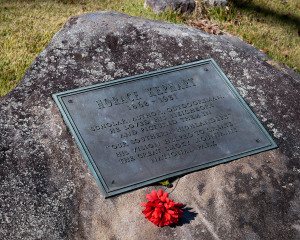 So yesterday, we packed up the car and headed off to see this mysterious road. Upon arrival in Bryson City the first thing we had to do was visit the Bryson City Cemetery and find the grave of Horace Kephart. The Ken Burns film, America’s Best Idea, had a segment on the Smokies and it explained the critical role played by Kephart in the creation of the park. I guess I just wanted to stand near his grave and say thanks.
So yesterday, we packed up the car and headed off to see this mysterious road. Upon arrival in Bryson City the first thing we had to do was visit the Bryson City Cemetery and find the grave of Horace Kephart. The Ken Burns film, America’s Best Idea, had a segment on the Smokies and it explained the critical role played by Kephart in the creation of the park. I guess I just wanted to stand near his grave and say thanks.
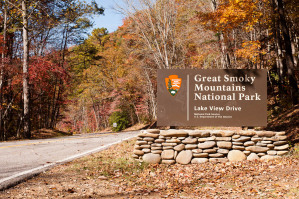 By now it’s getting close to lunchtime so we decide to get a bite to eat before heading to “nowhere”. (Only an idiot would go nowhere on an empty stomach!) Absolutely the best place for lunch or breakfast in Bryson City is the Everett Street Diner. It’s not fancy but, the food and service are outstanding. If you’re in the area, be sure to check it out. Besides, after you eat you can jump in your car and continue northwest on Everett Street until it turns into Fontana Road aka Lake View Drive aka The Road to Nowhere.
By now it’s getting close to lunchtime so we decide to get a bite to eat before heading to “nowhere”. (Only an idiot would go nowhere on an empty stomach!) Absolutely the best place for lunch or breakfast in Bryson City is the Everett Street Diner. It’s not fancy but, the food and service are outstanding. If you’re in the area, be sure to check it out. Besides, after you eat you can jump in your car and continue northwest on Everett Street until it turns into Fontana Road aka Lake View Drive aka The Road to Nowhere.
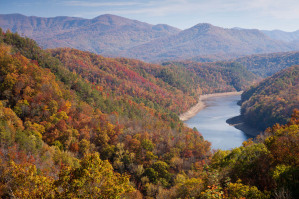 Lake View Drive travels along the north edge of the Tuckasegee River as it flows westward into Fontana Lake. The terrain is steep and beautiful with several excellent views of the surrounding mountains and the river below. The fall foliage appears bright and surrealistic almost like a water-colored painting.
Lake View Drive travels along the north edge of the Tuckasegee River as it flows westward into Fontana Lake. The terrain is steep and beautiful with several excellent views of the surrounding mountains and the river below. The fall foliage appears bright and surrealistic almost like a water-colored painting.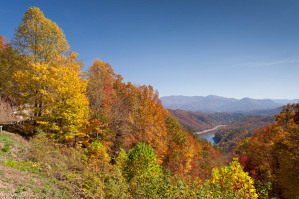
The road itself is pretty typical of other roads within the park and is similar to the Blue Ridge Parkway. It has few official paved overlooks but, there are several pull-offs with excellent views. The pace is relaxed and the traffic is minimal. There are no facilities on the road and it only has one bridge and one tunnel. In fact, you can’t even drive through the tunnel.
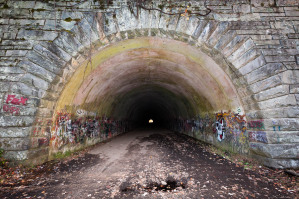 The end of the Road to Nowhere appears in the form of a steel bollard barricade. A 500 foot walk from there reveals a 1,200 foot long, dark, graffiti filled tunnel. It seems like such a waste to see the marvelous stone masonry and hours of labor required to create a tunnel that has never and will never be used.
The end of the Road to Nowhere appears in the form of a steel bollard barricade. A 500 foot walk from there reveals a 1,200 foot long, dark, graffiti filled tunnel. It seems like such a waste to see the marvelous stone masonry and hours of labor required to create a tunnel that has never and will never be used.
We really enjoyed our visit to the area and will certainly keep it in mind as a scenic but, less visited, section of the Great Smoky Mountains National Park.


